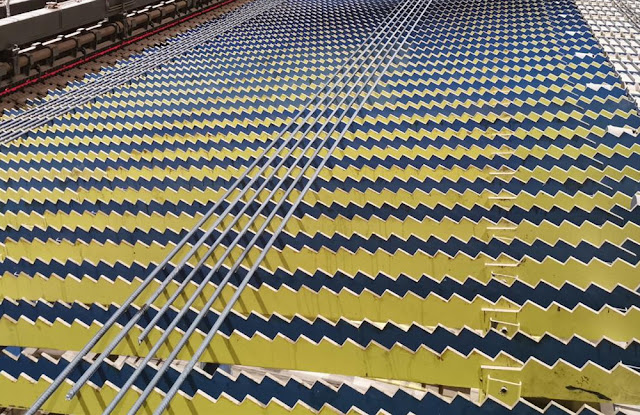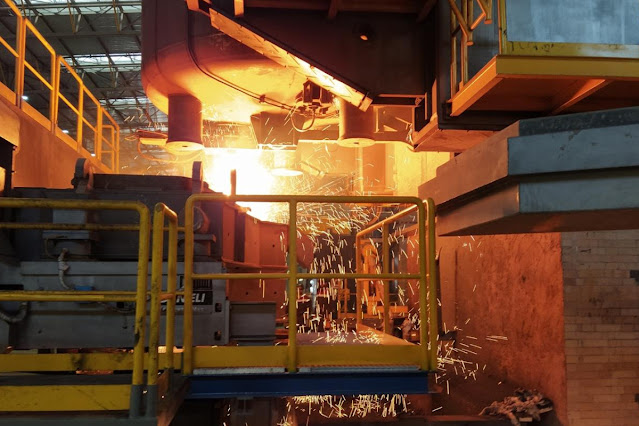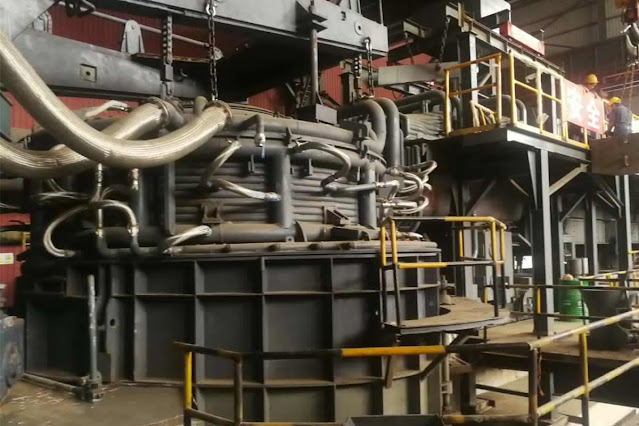Precautions for the Use of Carbide Rolls
2. During the rolling process of the roll, pay close attention to the running state of the bearing seat, and stop and check if any abnormality is found.
3. In order to reduce the occurrence of fatigue cracks, the surface of the roll ring must be cooled with water to reduce the thermal expansion of the surface. When the rolled piece is in contact with the roll ring surface, the temperature of the roll ring surface can reach 500-600℃. Cooling water sprayed on the hot roll ring surface will form a layer of gas film covering the surface of the roll ring, which will seriously affect the cooling effect. It shows that when the cooling air pressure reaches more than 0.5Mpa, the gas film will be broken, so that the cooling effect will be improved.
Low-speed rolling mill roll ring cooling water pressure should not be too high, in order to prevent the cooling water from splashing and fail to cool down, the cooling water pressure should be 3-4Mpa, and the water volume should be 40-50 cubic meters per hour. At the same time, in order to improve the cooling effect, the coverage of the cooling water sprayed by the cooling water nozzle should be correspondingly overlapped, and the outlet of the cooling water column should be aligned with the exit of the roll ring. Carbide roller rings also have special requirements for water acidity: PH≥7.2 is weakly alkaline and kept clean.
4. Water cooling of carbide rolls is an extremely important means during use. The better the cooling condition, the higher the tonnage of carbide rolls, otherwise the rolls will easily burst. Therefore, during the rolling process, each production shift should stop every 4 hours to check whether the position of the dedicated cooling water pipe is moving and whether the water pipe nozzle is blocked, and then drive the rolling.
5. When handing over the shift, the operator should carefully check the wear of the rolling slot and whether there are minor cracks. If the above happens, they should report to the quality supervisor of the dispatching room, and then replace the carbide roll groove after confirmation.
6. During the rolling process, the roll gap adjustment must not be zero-gap, that is, the roll must not be touched during rolling.
7. Once the sampling room is found to be abnormal in rolling products, the person in charge should notify the dispatching room, and the dispatching room should stop for inspection immediately after receiving the notice. If the key block of the roll matrix is protruding, the screws are loose, and the rolling groove has slight cracks, it is necessary to replace the rolling groove and the cemented carbide roll.
8. It is recommended that the single groove-rated rolling tonnage of ф5—ф8 wire is 800—1000 tons. The single groove rolling tonnage cannot be excessively higher than the specified tonnage, otherwise, the surface micro-cracks will cause the roll ring to crack, even if it does not crack, it will increase the amount of roll ring grinding, resulting in uneconomical.
Advantages and Disadvantages of Applying Carbide Rolls on Bar and Wire Rod Rolling Mills
Due to the advantages of high hardness and good wear resistance, the application of cemented carbide roll rings on bar and wire rod rolling mills shows the following advantages:1. Improve the quality of steel products, so that the surface quality and tolerance dimensions of the steel are completely improved, and the negative deviation control is very accurate;
2. Reduce the number of slot changes, roll changes and downtime, increase the utilization rate and output of the rolling mill, and enable the rolling mill to create greater economic benefits in the same time;
3. Reduce the scrap rate of products and reduce the labor intensity of the production workshop;
4. Reducing production costs is an effective way for enterprises to increase efficiency;
5. Conducive to the application of endless rolling technology.
The disadvantages are: due to the high hardness and brittleness of cemented carbide roll ring and high sensitivity to cracks, it is difficult to maintain, and the requirement for cooling water is high in use, and it can not bear the rapid cooling and heating, otherwise it is easy to cause destructive accidents.
If you are looking for carbide rolls, please contact me.
Email: marketing2@hanrm.com.







